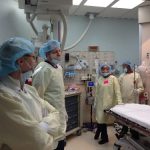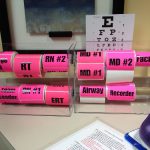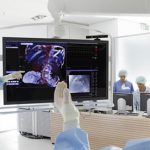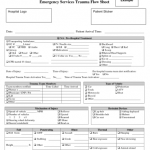There’s been renewed interest among my readers regarding trauma flow sheets and the EMR. This is an update on information from a previous post.
There is a continuing push by hospital administrations nationwide to move toward the use of electronic medical record (EMR) systems in hospitals. In the US, much of this is being driven by the Meaningful Use initiative by CMS. There are a number of benefits from using such systems, including but not limited to:
- Comprehensive and permanent data collection
- Easily accessed system-wide
- Reduction in human errors
- Increased throughput once the initial learning curve has been completed
- Multifaceted reporting capabilities
Unfortunately, many hospitals or hospital system IT departments are insistent in moving all charting to the EMR, including the trauma flow sheet. For some, it is a revenue enhancement tool that takes advantage of improved documentation by ED physicians. For others, it is a result of the irrational urge to make everything paperless.
As a trauma center reviewer, I have had the privilege of visiting many hospitals and inspecting their trauma flow sheet charting tools. The bottom line is that I have still not found an electronic medical record system that can replace the handwritten trauma flow sheet.
A trauma team activation is a complex, fast-paced, finely orchestrated performance that does not lend itself well to being recorded electronically. There are two major problems:
- Accurate and timely data entry (human interface issue: mouse, keyboard)
- Intelligible reports (report organization problem)
There is so much information being transferred nearly simultaneously (vital signs, physical findings, procedures, fluid volumes given, laboratory and radiology orders, narratives) that it is not possible to record it completely and accurately using any current computer data entry interface or medical record system. Frequently, it ends up being recorded by hand on another piece of paper and is then entered later into the EMR. This is easily spotted by trauma reviewers.
The reporting features of virtually all EMRs allow for a listing of events sorted one way or another. It is rarely graphical in nature, and typically spans many, many pages of text output. Charts that I have reviewed have “reports” ranging from 8 to 20+ pages. It is virtually impossible for a human being to read through this type of output and reconstruct the flow of a trauma resuscitation. In many PI review cases, the trauma program manager is reduced to transcribing the individual data items from the EMR back onto a paper trauma flow sheet in order to conceptualize the resuscitation. Frequently, trauma reviewers identify care problems during the trauma activation that were buried in all the report output.
IT personnel may claim that the problem is an “end user failure.” It’s not. I defy any of them to come to a trauma resuscitation and rapidly and accurately transcribe all of the information presented, or try to review a PI case based on a printed EMR report.
The real bottom line: trauma flow sheets (and other similar code sheets) can not and should not be reduced to electronic data entry. It is not only frustrating, but will hamper the trauma PI process. If the reviewers find that the impact on the trauma PI program is significant, it may result in a PI criterion deficiency and can jeopardize a trauma center’s verification status!
Related post:







